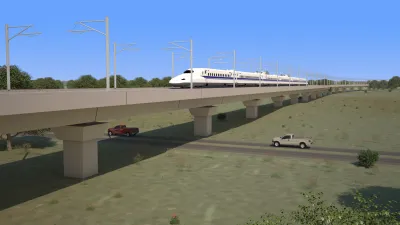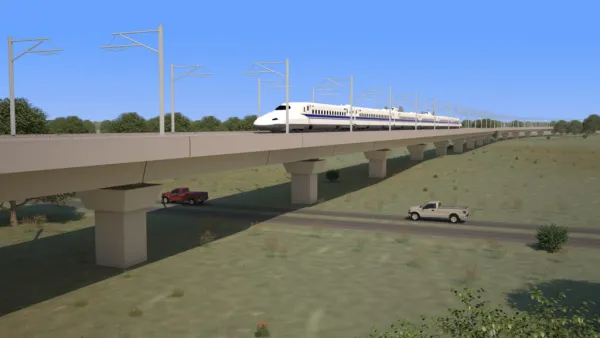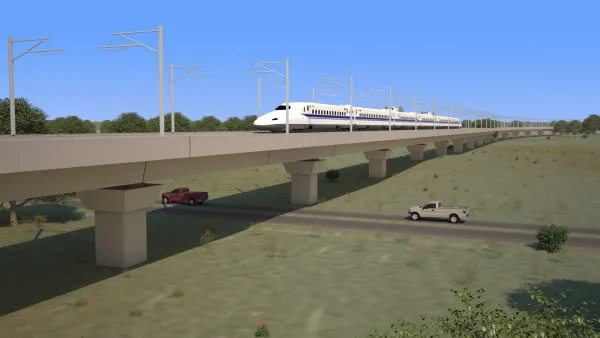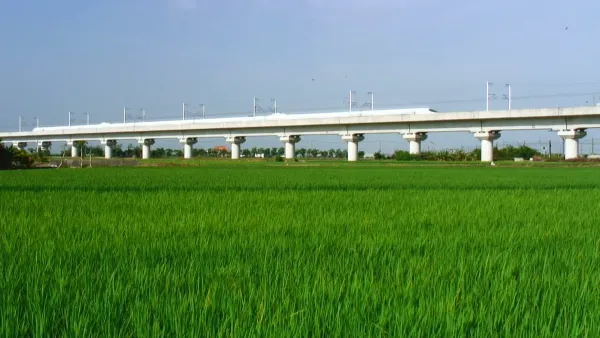Texas Central has its construction contracts and a court decision in its favor, but significant obstacles remain for the high-speed rail project connecting Houston and Dallas to get underway.

"Privately funded high-speed rail developer Texas Central has signed a $16 billion 'final agreement' with Italian firm Webuild Group and its U.S. subsidiary Lane Construction Corp. to build its 236-mile line connecting Dallas and Houston," reports Marybeth Luczak. The announcement comes with a large caveat, however: the project has yet to secure funding to pay the new contractors.
Luczak details some of the difficulties in reporting on the project, saying Texas Central and its media relations contractors have not been willing to provide much specific detail on proect financing. Available information about project financing has not been updated since fall of 2020, according to Luczak, despite recent inquiries.
Texas Central media representatives were willing to estimate the launch of construction in late 2021 or late 2022.
According to the article, Webuild is planning to replicate performance metric established by the Japanese Tokaido Shinkansen system, operated by Central Japan Railway Co., with train speeds of up to 200 mph.
"The system is planned to link Dallas and Houston, with an intermediate station west of Roans Prairie in Grimes County and near Texas A&M University, on a dedicated right-of-way. Travel time is being advertised at less than 90 minutes. Webuild estimates that approximately 6 million riders will use the train by 2029 and 13 million by 2050," according to Luczak.
In other news related to the project, the Texas Supreme Court declined a case that attempted to block Texas central from using eminent domain to acquire right of way for the project. Kim Roberts reports on the demise of the case made by homeowners against the project in an article for The Texan.
FULL STORY: Texas Central: Contractor Secured. Funding?

National Parks Layoffs Will Cause Communities to Lose Billions
Thousands of essential park workers were laid off this week, just before the busy spring break season.

Retro-silient?: America’s First “Eco-burb,” The Woodlands Turns 50
A master-planned community north of Houston offers lessons on green infrastructure and resilient design, but falls short of its founder’s lofty affordability and walkability goals.

Delivering for America Plan Will Downgrade Mail Service in at Least 49.5 Percent of Zip Codes
Republican and Democrat lawmakers criticize the plan for its disproportionate negative impact on rural communities.

Test News Post 1
This is a summary

Test News Headline 46
Test for the image on the front page.

Balancing Bombs and Butterflies: How the National Guard Protects a Rare Species
The National Guard at Fort Indiantown Gap uses GIS technology and land management strategies to balance military training with conservation efforts, ensuring the survival of the rare eastern regal fritillary butterfly.
Urban Design for Planners 1: Software Tools
This six-course series explores essential urban design concepts using open source software and equips planners with the tools they need to participate fully in the urban design process.
Planning for Universal Design
Learn the tools for implementing Universal Design in planning regulations.
EMC Planning Group, Inc.
Planetizen
Planetizen
Mpact (formerly Rail~Volution)
Great Falls Development Authority, Inc.
HUDs Office of Policy Development and Research
NYU Wagner Graduate School of Public Service





























